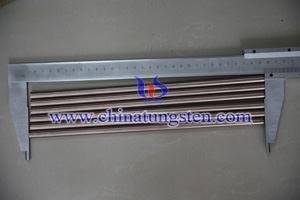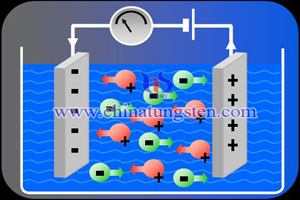Tungsten Copper Rod Conductivity
Introduction
The capability of current conduction is called as conductivity. Different proportion tungsten copper has different conductivity, which higher Cu content rod has higher electrical conductivity. Usually use σ to represent its conductivity.
Principle
Generally, metal, semiconductor, an electrolyte solution or molten electrolyte, and some non-metal can conduct electricity. Tungsten copper rod belongs to metal conductor. The conducting capacity of no-electrolyte depends on the outer free electrons and atomic crystal structure, such as more free electrons contain can conduct current easily. Graphite and diamond is an allotrope of carbon, graphite conductive and non-conductive diamond, which is caused by the crystal structure. Conductive electrolyte ions generated because ionic compound is dissolved or melted so as to have conductivity.
Measurement
In general, the solid conductor resistivity can be obtained by Ohm's law and the law of resistance measurements, and an electrolyte solution is used alternating current bridge method. Commonly used instrument is provided with a constant adjustment, temperature coefficient of regulator and automatic temperature compensation in an instrument part by the conductivity cell and temperature sensors can directly measure the conductivity of the electrolyte solution. The principle is that put two parallel polar plates or cylindrical electrode (with fixed distance L) into test solution, at both ends of the plate with a certain electric potential (in order to avoid an electrolytic solution, usually sine wave voltage, frequency 1 ~ 3kHz). And then measure the conductivity between two polar plates by conductivity meter. In addition, there are some measurements, such as double bridge method, DC potentiometer measurements, and DC four-probe method


Any feedback or inquiry of Tungsten Copper Alloy Products please feel free to contact us:
Email: sales@chinatungsten.com
Tel.: +86 592 512 9696 ; +86 592 512 9595
